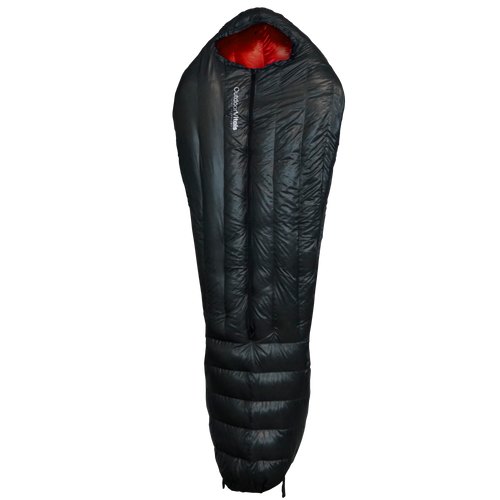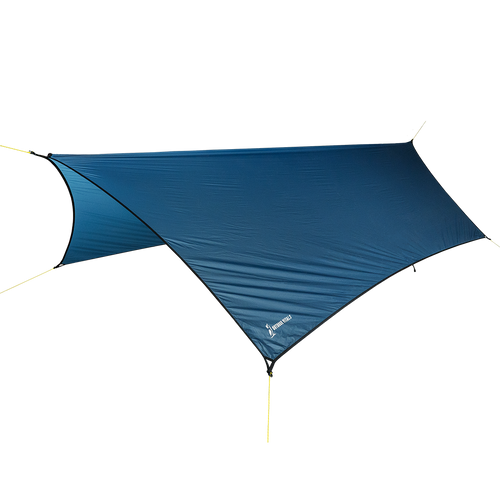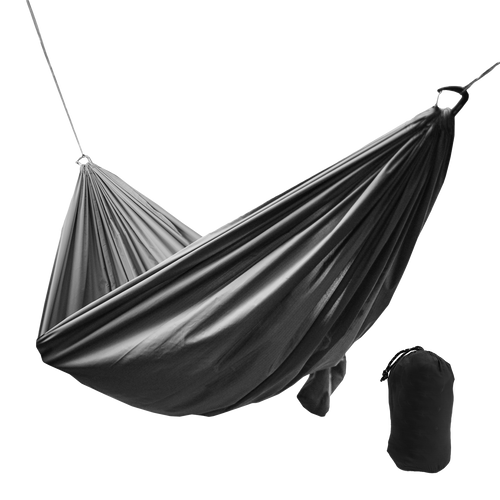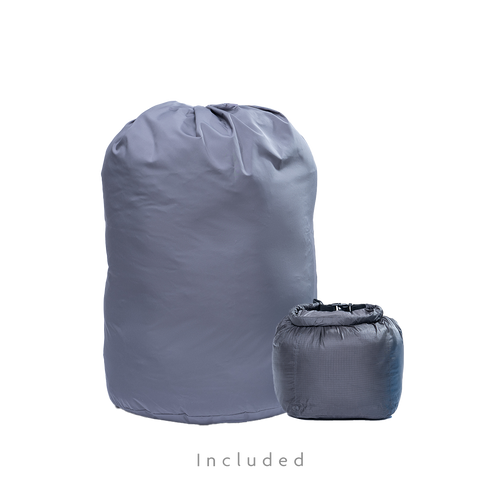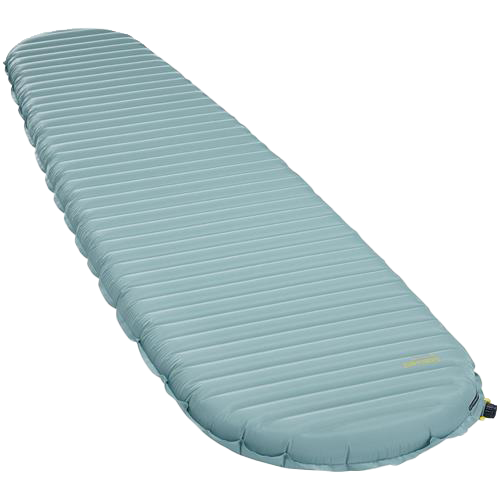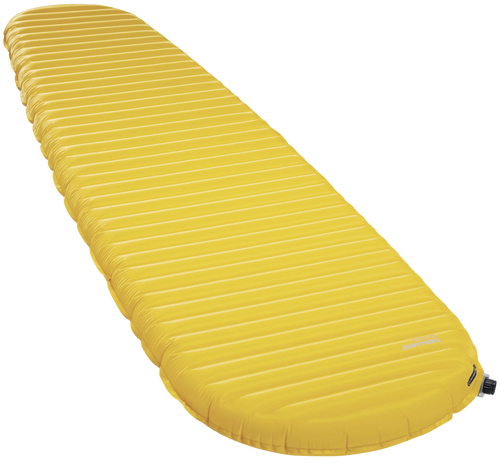Static Layering - The Right Temperature On Every Trip
If you're someone who enjoys hanging around the campfire at the end of a day of backpacking, you need to understand this.
Static clothing layers make the difference between a good time and a ruined -or even dangerous- trip.
In the backcountry, we need clothing that performs.
We need a collection of clothing that functions as tools to allow us to remain active in the backcountry as long as we want, in any season.
By utilizing an Adaptive Performance Clothing System, we will have the right collection of clothing that will keep our bodies performing optimally in the inevitable changing conditions like weather, terrain, and strenuousness of the journey.
We've actually come up with 10 main clothing items that you can mix and match depending on the conditions of your adventure. If you have all 10 items, you'll be prepared for almost any trip into the backcountry, no matter what time of year. To read more about these items, click here.
This Adaptive 10 Piece Layering System is categorized into 3 collections: Kinetic, Protective, & Static.
The Static Collection
The clothing pieces in the Static Collection are worn when we’re stationary, not active.
Any time we stop throughout the day for more than a few minutes would be considered a static situation, and obviously, when we’re sleeping we aren’t going anywhere and our body is at rest. So the static collection applies to static situations and sleep.
Static insulation in the collection should keep us warm and prevent heat loss when we’re not active, and it can also supplement our sleep system to increase its insulative value. The sleeping clothes are used as an always-dry set of clothes to improve our sleep, as well as play a role in maintaining our core body temperature. In really cold and wet conditions, the Static Collection is a critical factor in our last stand against potentially dangerous weather.
Our physical exertion acts as a very efficient heat source, and it takes very cold conditions to overwhelm our own heat output to the point where we need substantial insulation from the cold. However, when we are static, or not moving, our “heat source” diminishes significantly. In cool to very cold temperatures we need an effective lofted insulation piece to trap our body heat within our clothing system, which also perpetuates the movement of moisture outward through our layers, and dries us out.
This is especially important if we have become wet from sweat or precipitation.
It is a critical piece in maintaining our core body temperature. Once we have stopped moving, or in the case of a backpacker, when we stop for the day to set up our camp, if temperatures are cool or cold we should put on our static insulation jacket ( ‘puffy jacket’ is a frequently used generic term ).
People often pack unnecessary extra clothing with the mindset that they’ll change into them if they get sweaty. It’s also a common thought that we should wait for our clothes to dry before donning our static insulation.
This is misguided.
We will actually dry out any wet or damp layers much faster by putting on static insulation over top of all the layers we’re wearing. This is a proven process and it works every time.
The more we exercise our clothing system the more confident we will be, and we will always benefit from the weight savings of a confident clothing system. If temperatures are mild or warm and we are hot and breathing heavy, it’s obviously appropriate to let our bodies lose some heat to cool off. What we’re referring to applies in colder temperatures where sitting static in wet or damp clothing will quickly strip our body heat to an uncomfortable or unsafe level.
Whether it’s from precipitation or sweat, we’re usually wet by the time we set up camp for the night. In mild, non- threatening conditions, a dry set of sleeping clothes (top and bottom) is conveniently comfortable and can help us sleep better. In cold, wet conditions, getting out of the weather and into dry sleeping clothes gives us an immediate boost in warmth and morale.
Conversely, in hot weather when we’ve sweat through everything we’re wearing while hiking ( moving set ), it feels great to get out of those clothes before going to bed for the night.
Again a morale boost.
We never anticipate and react to cold wet weather perfectly, which means it’s not unlikely that we may sometimes get to a campsite wet and shivering. In cold and windy conditions it does not take long for this scenario to lower our body temperature toward hypothermia. Getting into a tent, into our dry sleeping clothes, and into a sleeping bag can quickly warm us up, much quicker than if we were to just get in a shelter and directly into a sleeping bag in our wet clothing.
A lightweight, dry set of clothes doesn't just warm us up. It will lower our stress levels, boost morale, and provide emotional security, all of which will help us get good, much needed sleep and recovery.
Category: Lofted Static Insulation
-for non-active time, as well as sleep system supplement.
The application and function of Static Insulation is different from Active Insulation. With static insulation, we want as much dead air space ( loft ) as possible for as little weight as possible, and we want it to take up as little volume as possible when it's packed. In other words we want the warmest jacket possible for the least amount of weight and size. Breathability is a much lower priority and we can accept lower breathability with this piece, since this is not a garment we’ll be wearing on the move.
There are two general classifications of insulation base materials, down and synthetic. There are also two other classifications of insulation type, loose fill and sheeted insulation. The base materials, or composition, are related to the physical material the insulation is made of. The classification of insulation type is related to how the insulation is arranged to achieve loft and create dead air space to trap heat. When we talk about static insulation, regardless of type or classification, the insulation has to be arranged in the garment between an outer fabric and an inner fabric.
Think of it as the marshmallow in between two graham crackers of a s’more. The two fabric layers protect and contain the insulation, as well as help trap air for heat retention.
If we think about lofted insulation in terms of warmth, there are various warmth levels of insulation. Where in sleeping bags, the scale is pretty easy to interpret, with temperature ratings, lofted insulation garments are a little different. Going into depth about all the specifics regarding insulation would require a separate article or seminar.
With all the insulation types and classifications, there are certain numbers, or measurements assigned to indicate the amount of insulation in weight that is put into a garment. There are also numbers / measurements assigned to indicate how lofty or fluffy the insulation is, or how warm the insulation is.
To keep it simple, for any of the numbers given, the higher the number, in general, the warmer the garment will be.
Synthetic Insulation
Synthetic insulation is made of a base fiber that is manufactured, or man made, not a natural material. The vast majority of synthetic insulation is made from polyester fibers.
Think of this as the base ingredient that the insulation is made of. The fibers are like really thin hairs that are thousands of feet long.
Sheeted insulation is constructed by hundreds of thousands of fibers being loosely adhered to each other, randomly tangled together, and stacked on top of each other to form a fluffy sheet of continuous fibers. Each fiber is a single, continual piece throughout the length of the entire roll of insulation as it is manufactured. All the little spaces or gaps between fibers create dead air space that stops air from moving, which traps body heat and prevents it from escaping. If air can’t move, it can’t draw away heat.
There are benefits and drawbacks to the use of sheeted insulation. Of the various lofted insulation types, sheeted insulation is the least compressible. This is of course relative, because it is decently compressible since it is still very lofty and not dense.
On the other hand, sheeted insulation doesn’t need quilting lines or stitch lines that are sewn into a jacket for the purpose of keeping insulation from shifting and moving around within the jacket, which causes cold spots. As a result, sheeted insulation provides a very even and consistent level of loft throughout the garment without the need for additional sewing lines.
Synthetic insulation can also be made into a loose fill insulation.
The main reason this exists is to have a synthetic insulation that mimics the characteristics and loft of down. Loose fill insulation is really just a massive quantity of individual insulation fibers or down clusters. In this case, the fibers are cut in short lengths and manipulated, or distorted in a way that makes each short fiber take a more 3 dimensional random shape, like a coil, or a cluster. Perhaps we can just call it a fluffy cluster.
The insulation really becomes ‘loose fill insulation’ when there is a large accumulation of those fluffy clusters, it’s gathered together into a giant fluffy mass. When hundreds of thousands, maybe millions of these fluffy fiber clusters are grouped together, they behave and look similar to down, which is also a loose fill insulation.
A handful of this insulation could contain thousands of fiber clusters. When it is put inside a chamber, like the inside of a jacket, we now have countless little pockets of trapped air between every coil, turn, and crimp of the clusters. Loose fill synthetic insulation is applied to the inside of a garment the same way down is. While it insulates and behaves similarly to down, it is not quite as thermally efficient as down, meaning its warmth to weight ratio is lower than down, so it requires more insulation ( therefore more weight ) to achieve the same insulative value as down.
Conversely, down insulated garments can achieve the same warmth level with less down, which means less weight. Another potential drawback of loose fill synthetic is that it has more tendency to shift and move around within the jacket a bit. So the chambers, or pockets that are filled with the insulation usually need to be a bit smaller to hold the insulation in place effectively.
A general benefit of synthetic insulation, sheeted or loose fill, is that it retains almost all its insulative value when it gets wet.
It’s warm when wet.
Synthetic insulation is made of hydrophobic fibers, meaning water has difficulty adhering to it. Basically it’s really hard to get wet, and it has a hard time absorbing water.
Down Insulation
Down is a product of waterfowl, so it is a natural insulation material.
It is an extremely light, airy, and fluffy 3 dimensional cluster of extremely fine hair like fibers. Down insulation as it applies to a clothing system is loose fill insulation, meaning it is a mass accumulation of individual down clusters, which when put inside a garment create the dead air space we need to prevent heat loss.
Simply put, down insulation is a fluffy mass.
On a waterfowl, its down layer sits beneath its feathers and insulates its body from cold water and air. Down is very different from feathers in that it has no quill or any rigid spines, and because the fibers are so fine it takes a 3 dimensional cluster shape. Because the fibers are so fine, and the 3 dimensional structure, down clusters hold an incredible amount of dead air space volume for their size.
Down is an incredible insulator, with some substantial benefits. It has the highest warmth to weight ratio of any known material, man made or natural. Also, because it is so airy and the fibers are so fine, it is the most compressible insulation material available.
What that means for us is that down is the lightest weight insulation material available, and it provides the most amount of heat retention for the lowest amount of weight. If properly cared for, down insulation remains can maintain its effectiveness for 10-20 years.
With its excellent benefits, there are some drawbacks or things to consider about down.
Down is not water resistant, and when it gets wet it collapses, or loses its loft, which means it can no longer hold dead air space and retain heat.
It’s not something to be paranoid about, but it is something we should be deliberately aware of in choosing how and when to use down insulation in our clothing system. It’s important to point out that in real world application of down insulation within a garment, this doesn’t happen as easily as one might think.
Remember, the down is in between two layers of fabric. Even if the fabric isn’t waterproof, most high quality down jackets will have a DWR treatment on the face fabric, and the face fabric itself will stop quite a bit of water before it gets through to the down insulation. It is also very common these days for down insulation to be treated with a DWR treatment, which adds meaningful water resistance to the down. Water resistant down is a good product and it is quite effective in mild to moderately wet short term conditions, but over long or repeated periods of water exposure it will eventually lose its loft.
Hybrid Loose Fill Insulation
It’s also worth pointing out that there are some products on the market that utilize hybrid loose fill insulation. Hybrid, or blended insulation is made with various ratios of blended down and synthetic insulation.
These insulations can withstand a lot of moisture while retaining effective loft. Certain blend ratios can yield a very water resistant insulation that weighs the same as a 100% down insulation. These are worthy of consideration depending on our priorities, preferences, and especially in wetter conditions when we need a high warmth to weight ratio and high compressibility.
Every gear option has drawbacks, but if we are aware of how our clothing system works, we can know how to manage the benefits and mitigate the drawbacks with confidence. With that in mind, we recognize that a down puffy jacket doesn’t ever really need to be exposed to precipitation or sweat since it's worn in static situations.
Category: Sleeping Set - Top & Bottom
We never anticipate and react to cold wet weather perfectly, which means it’s not unlikely that we may sometimes get to a campsite wet and shivering.
In cold and windy conditions it does not take long for this scenario to lower our body temperature toward hypothermia. Getting into a tent, into our dry sleeping clothes, and into a sleeping bag can quickly warm us up, much quicker than if we were to just get in a shelter and directly into a sleeping bag in our wet clothing.
A lightweight, dry set of clothes doesn't just warm us up. It will lower our stress levels, boost morale, and provide emotional security, all of which will help us get good, much needed sleep and recovery.
The sleeping set also protects the inside of our sleep system from dirt, oils, or other contaminants that can decrease the effectiveness of our sleep system. This is particularly important on long term expeditions.
Understanding these concepts about the Static Clothing Collection can help you have a more enjoyable time & stay more prepared in the backcountry.
To read more about the Static Collection, read here.

